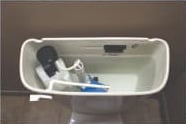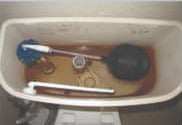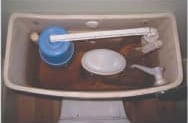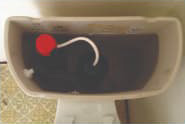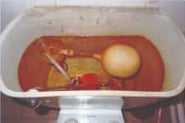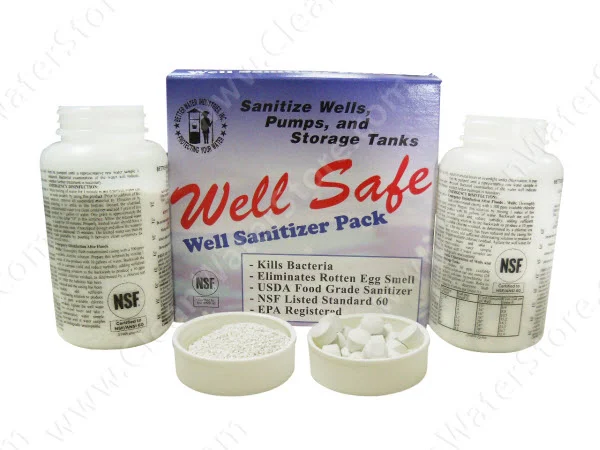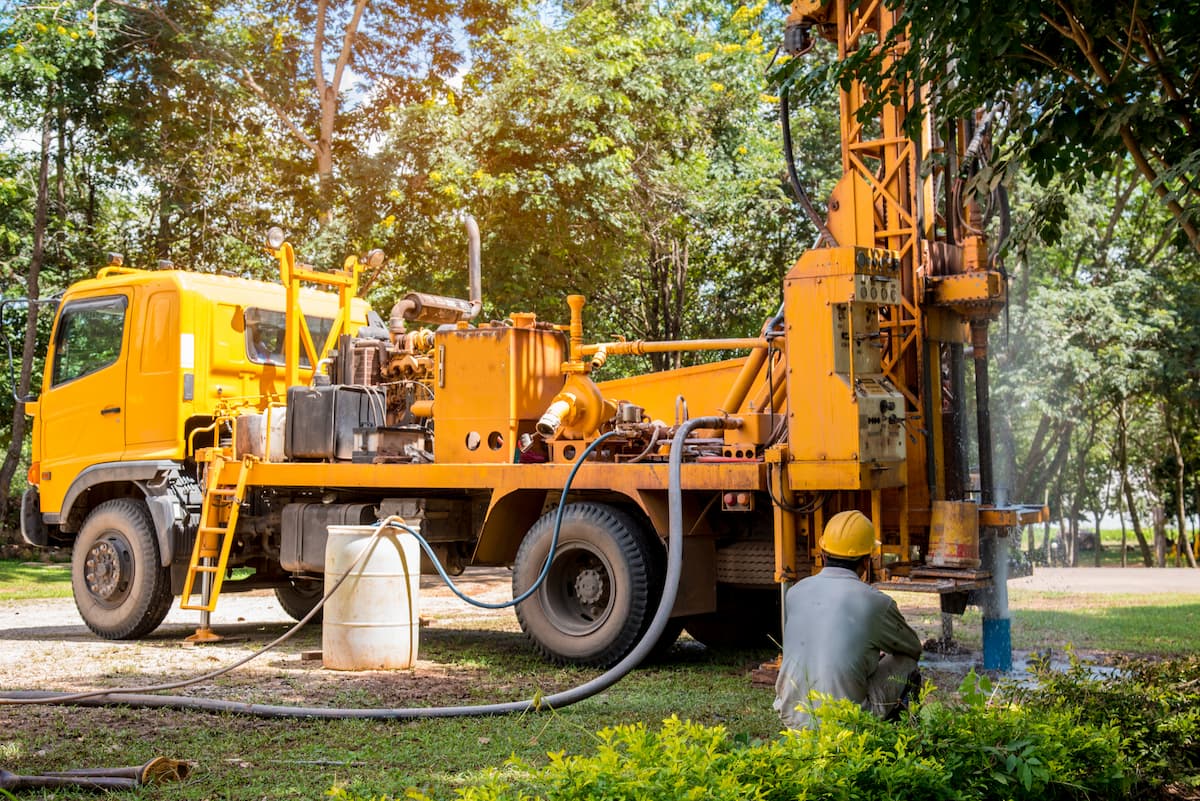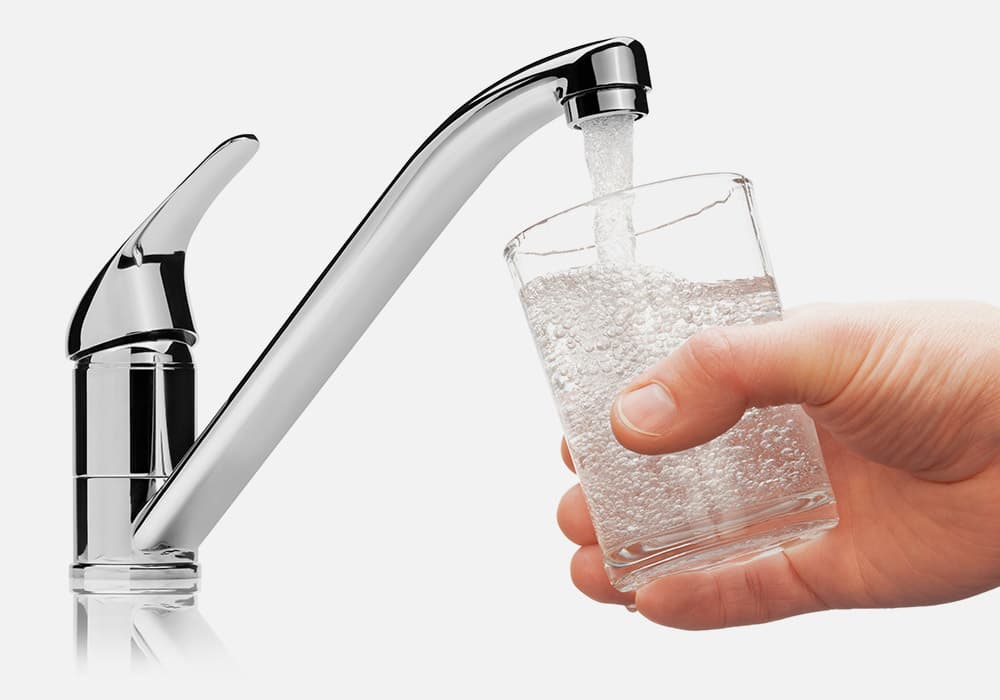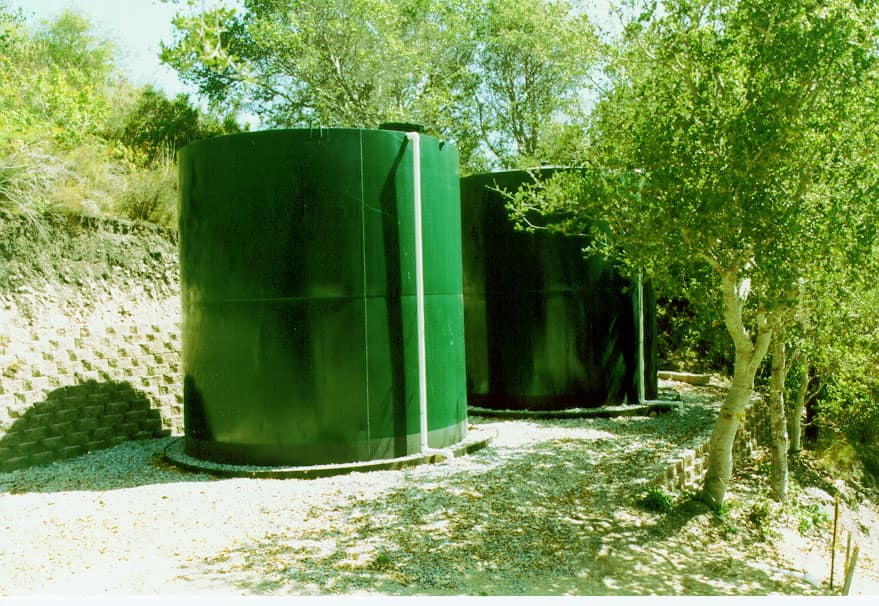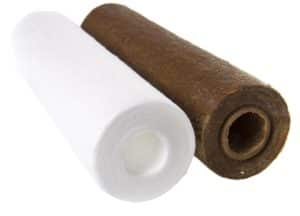Home Water Tests That You Can Do Yourself, For Free.
Problems with hard water spots or rust stains?
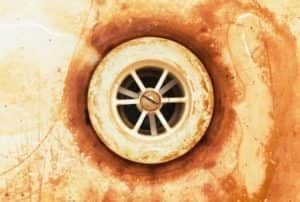 Home Water Test Kits are available, but did you know there are some basic steps you can take to find out your water condition without spending a penny?
Home Water Test Kits are available, but did you know there are some basic steps you can take to find out your water condition without spending a penny?
Are you wondering if your water is eating up your pipes and contaminating your water with corrosion by-products?
Follow the four free, fast ‘water tests' below to get some quick insight into what the water is doing (if anything) to your pipes, fixtures, and appliances.
There are four ways you can test your water's effects on your appliances, fixtures, and plumbing without having to spend a penny or use any special tools or buy anything!
1. Hardness Soap Test
Calcium scale (“hardness”) costs U.S. homeowners billions of dollars each year by destroying plumbing, water heaters, fixtures, and appliances. See if your water is hard by using the simple Soap Hardness Test.
1. Use a 12 oz measuring cup or another container to measure 12 oz, such as a small water bottle.
2. Fill to the 12 oz line.
3. Add ten drops of liquid dish soap and shake.
4. If you see lots of suds, your water is most likely low in calcium hardness. If you do NOT see suds, add another ten drops.
10 Drops = 0—1 Grains Per Gallon VERY SOFT
20 Drops = 1— 4 Grains Per Gallon SLIGHTLY HARD
30 Drops = 4— 8 Grains Per Gallon MEDIUM HARD
40 Drops = 8—16 Gains Per Gallon HARD
50 Drops = 16 & Higher Grains Per Gallon VERY HARD
2. Kitchen Faucet Aerator Test

- The aerator is at the end of the faucet, where the water pours out.
- This has a small screen that traps debris.
- Remove the aerator on your kitchen faucet by unscrewing it by hand or using small pliers.
- Be careful not to scratch the aerator.
- Place the aerator in a bowl of white vinegar for one hour. The white vinegar will dissolve and remove hardness build-up and allow you to inspect what is left in the bowl after cleaning.
- Clean and rinse and reinstall the aerator.
- If your bowl of vinegar has mineral deposits and sediment in it, you can know that these same minerals are clogging other fixtures such as toilets and dishwashers.
3. Water Heater Flush Test
Water heaters can collect sediment and hardness and are easy to drain. Use this simple and fast test to see if your water heater fills up with sediment or minerals.
1. Connect the drain valve to a garden hose (drain valves on water heaters typically are ‘hose bibs, ‘ meaning they can connect to a garden hose).
2. Turn on the drain valve at the bottom of the water heater and allow water to flush into a 5-gallon bucket or another container.
3. This serves as a visual water test for sediment and minerals that your home appliances are exposed to and can indicate the water heater's condition.
4. The water should appear clean and clear, and free of sediment.
5. If you see flakes or sand or grit, this can be an indication your water heater's anode rod has deteriorated, and the glass lining of your water heater is going bad.
4. Toilet Flush Tank Inspection Test
The Toilet Flush Tank Test is an effective, easy and free way to quickly see what your water may be deposited in your pipes and appliances.
Keep in mind that the toilet flush tank has clean water from your cold water pipes.
The flush tank holds the clean water used for flushing the toilet, and it is like having a mini settling storage tank right in your home.
The water goes in the flush tank and is exposed to air. The water may leave sediment, rust, or corrosion by-products from the pipes (assuming any in your plumbing).
(Click here if you want to read more about home water testing.)
Top Ten Water Problem Symptoms Found in Toilet Flush Tanks: |
|
|---|---|
Clean WhiteThis could be a new toilet or recently cleaned. If your tank looks like this and is not new and recently cleaned, it likely indicates that your water is NOT leaving sediment or deposits in your plumbing or fixtures. |
Deposits in the BottomThis can mean the water coming into your home has sediment or rust in it. Or if there is rust or flakes in the bottom, and your home has older style galvanized iron plumbing, it could be your piping needs replacing. |
Rust or Dark ColoredIf you are on city water, it might indicate the city main distribution pipes have been recently flushed or just plain bad or poorly treated city water. If you are on well water, this can mean you need an iron filter system. |
Black Water and DepositsTypically occurs on well water. Black deposits and black water mean either manganese in the cold water and ferric sulfide (black rust). This can also occur when the water has a rotten-egg odor. Treat with chlorine or peroxide and filter with Pro-OX filter media. |
Slimy Rust-Colored DepositsTypically occurs on well water. Stringy-looking, slimy deposits growing from the side of the toilet tank indicates iron bacteria. Water may appear frothy or bubbly. Treatment with chlorine or ozone (OR periodic shock treatment of well and pipes) to kill the bacteria, followed by filtration, is needed. |
|
If the tank is white and clean, it can indicate your pipes are in good condition.
Toilet flush tanks rarely get cleaned, and you can often determine a lot of what is going on with your water by simply looking in.
If you have a new low-flow toilet with an air tank inside your flush tank, this test won't work for you.
My wife thinks I'm a nut, but I have a habit of looking into almost every toilet flush tank that I come across.
In hotels, friend's and family's homes, and other places I come across that have removable flush tank lids, and I take a quick look. It's fascinating to see what is happening with the water inside, and I often add an image or two to my ‘toilet flush tank' photo collection!
The most serious condition I see is when the toilet flush tank has blue or greenish-blue stains. This means copper corrosion, and this type of water problem should be addressed immediately as it means your copper pipe is corroding and leaching heavy metals into your water.
The new ultra-low-flow toilet flush tanks make this type of inspection a little less useful, as the air bladder apparatus partially obstructs the flush tank's view. Eventually, as the standard flush tank toilets get replaced with the new ultra-low-flow flush with air bladders inside, you won't be able to see as much, but it still doesn't hurt to look.
Free Water Tests: Easy Well Water Test Kits

As always, if you would like to speak directly with one of our water experts, you can call us toll-free at 1-888-600-5426. Or, fill out our fast help form, and we will get back to you. Good luck!

